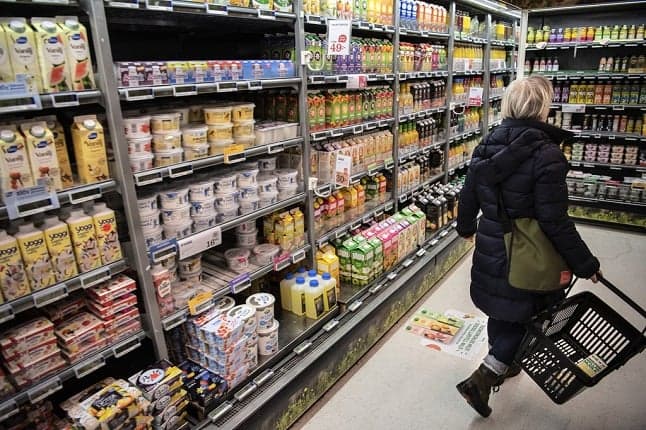Sweden's income gap grows as more people than ever are at risk of poverty

More people than ever in Sweden are considered to be at risk of poverty, new statistics show.
The proportion of people at risk of poverty topped 15 percent for the first time in 2019, according to data published by Statistics Sweden this week.
This is a relative measurement, also called 'low economic standard' in Sweden. It is based on the proportion of people whose income is less than 60 percent of the medium income, so it doesn't necessarily mean that the poorest have less money in their wallets than in previous years.
But it does mean that they have less compared to their peers, and that gaps between rich and poor are increasing.
"This can create tensions and can be serious," professor Daniel Waldenström, who researchers income gaps, told the TT newswire.
"Everyone with a job has had significant increases in income over the last 20 years," he said, adding that this meant pensioners, students, and the unemployed are relatively worse off. But Waldenström said that the proportion of people in absolute poverty had decreased.
Income gaps were also present between Swedish- and foreign-born people in Sweden, with the economic standard of the latter just 77 percent of that of native-born Swedes, a figure that has remained relatively stable over the past decade.
Statistics Sweden's measurements do not take into account the impact of the welfare system in Sweden, which reduces poverty among children and pensioners through for example child or housing benefits and subsidised health and dental care.
The demographic with the highest proportion (41 percent) of people living at risk of poverty according to this measurement is single women over 80, followed by people aged under 20 (20 percent).
Overall, households' economic standard increased by 0.7 percent in 2019, the slowest rate of growth since the 1990s – and due to the pandemic this may have slowed even further in 2020.
Differences in income, measured using the Gini coefficient which gives a score between 0 and 1 (where 0 means all households have the same income and higher values represent greater disparities), increased in 2019.
The richest ten percent of the population accounted for 26 percent of income, while the half of the population with the lowest income accounted for just 30 percent of the total.
Comments
See Also
The proportion of people at risk of poverty topped 15 percent for the first time in 2019, according to data published by Statistics Sweden this week.
This is a relative measurement, also called 'low economic standard' in Sweden. It is based on the proportion of people whose income is less than 60 percent of the medium income, so it doesn't necessarily mean that the poorest have less money in their wallets than in previous years.
But it does mean that they have less compared to their peers, and that gaps between rich and poor are increasing.
"This can create tensions and can be serious," professor Daniel Waldenström, who researchers income gaps, told the TT newswire.
"Everyone with a job has had significant increases in income over the last 20 years," he said, adding that this meant pensioners, students, and the unemployed are relatively worse off. But Waldenström said that the proportion of people in absolute poverty had decreased.
Income gaps were also present between Swedish- and foreign-born people in Sweden, with the economic standard of the latter just 77 percent of that of native-born Swedes, a figure that has remained relatively stable over the past decade.
Statistics Sweden's measurements do not take into account the impact of the welfare system in Sweden, which reduces poverty among children and pensioners through for example child or housing benefits and subsidised health and dental care.
The demographic with the highest proportion (41 percent) of people living at risk of poverty according to this measurement is single women over 80, followed by people aged under 20 (20 percent).
Overall, households' economic standard increased by 0.7 percent in 2019, the slowest rate of growth since the 1990s – and due to the pandemic this may have slowed even further in 2020.
Differences in income, measured using the Gini coefficient which gives a score between 0 and 1 (where 0 means all households have the same income and higher values represent greater disparities), increased in 2019.
The richest ten percent of the population accounted for 26 percent of income, while the half of the population with the lowest income accounted for just 30 percent of the total.
Join the conversation in our comments section below. Share your own views and experience and if you have a question or suggestion for our journalists then email us at [email protected].
Please keep comments civil, constructive and on topic – and make sure to read our terms of use before getting involved.
Please log in here to leave a comment.